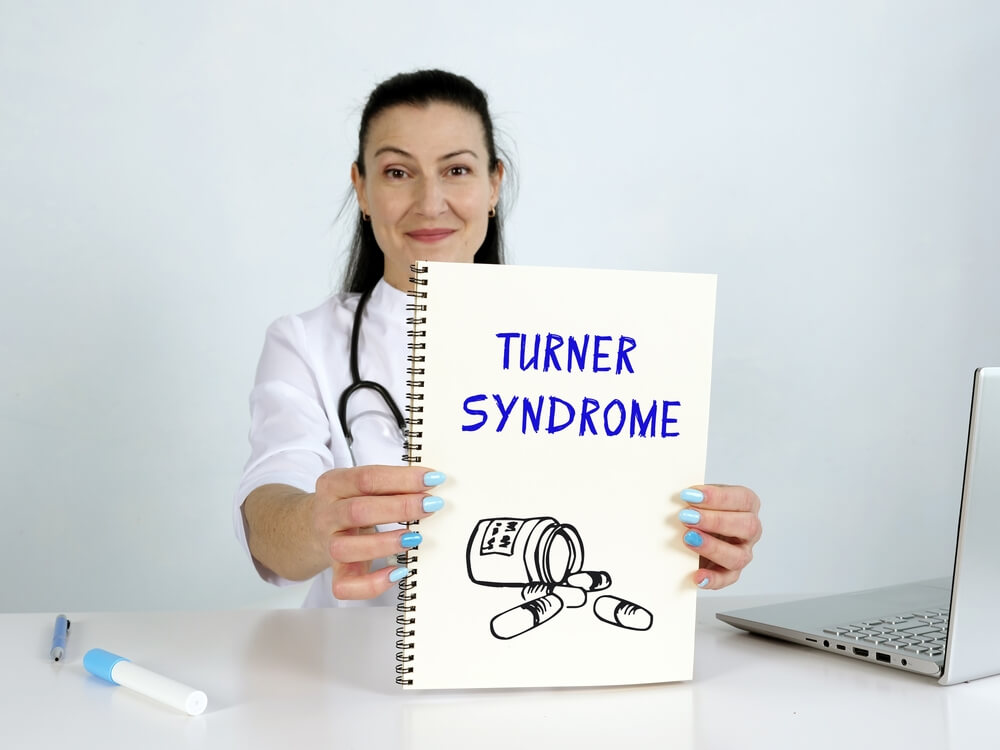Turner syndrome is a genetic disorder in which one of the X chromosomes is either partially or entirely missing. Because only females have two X chromosomes, this condition only affects biological girls and women. This genetic disorder can result in several health problems, like heart defects, infertility, and short height.
This article goes over the symptoms and complications associated with this syndrome. Can Turner syndrome be prevented? What are the options? This post will also discuss the causes and options for Turner syndrome treatment.
Symptoms of Turner Syndrome

The symptoms of this syndrome can vary significantly among people with the genetic disorder. The signs of Turner syndrome might be evident in early life in some girls, and it might not be readily apparent in others. Turner syndrome life expectancy can vary greatly due to how different and severe the symptoms can be.
How is Turner Syndrome treated? Later in this article, we will detail treatment options, but you should know that the signs of this chromosomal disorder differ depending on your child’s stage of life.
Before birth, this condition can be detected by a prenatal DNA screening that detects specific chromosomal abnormalities in the baby using a sample of the mother’s blood. A prenatal ultrasound may also be used to detect Turner syndrome by showing:
- Abnormalities of the heart
- Abnormalities of the kidneys
- Fluid on the back of the neck or other abnormal collections of fluid
After the baby is born, signs of this genetic disorder might include:
- Low-set ears
- Wide neck
- Broad chest and widely spaced nipples
- Narrow and upward turning fingernails and toenails
- High and narrow palate
- Arms that have an outward turn at the elbows
- Swollen hands and feet
- A slightly lower height than average at birth
- Heart defects
- Slower than normal growth
- Small or receding lower jaw
- Short toes and fingers
Later in life, kids with Turner syndrome are likely to be shorter than average. This arrested growth is expected to continue through adulthood. Another common sign of the disorder is defects of the ovaries due to ovarian failure during childhood, teenage years, and adulthood. This failure might have occurred before birth or slowly during childhood or the teenage years.
The signs of ovarian failure are:
- Slowed growth
- Skipping expected growth spurts
- Adult height much shorter than average
- Failure to begin puberty as expected
- Stalling sexual development during teenage years
- Inability to conceive without the use of fertility treatments
- Menstrual cycle irregularity
What Causes Turner Syndrome?
Under normal conditions, everyone is supposed to be born with two sex chromosomes, either two X chromosomes, or one X and one Y. Males inherit the Y chromosome from their father and one X chromosome from their mother. Females inherit one X chromosome each from their mother and father. In kids with Turner syndrome, one of those X chromosomes is missing, partially missing, or genetically altered somehow.
Can Turner Syndrome be prevented? The condition can occur in many ways, and unfortunately, the answer is no. What causes Turner syndrome is a completely random event that can occur during or shortly after conception.
This genetic disorder can occur due to one of the following events:
- Monosomy, caused by a defect in either the sperm or the egg. This results in only one X chromosome existing in every cell in the body.
- Mosaicism, which occurs in the early stages of fetal development. This cell division error results in some cells having two complete copies of the X chromosome, while other cells have only one copy.
- Y chromosome material in some cells. In cases where some cells have one copy of the X chromosome and a portion of Y chromosome material, girls with Turner syndrome develop as biological females. However, the presence of Y chromosome material increases the risk of developing cancer in the gonads. This type of Turner syndrome is considered rare.
- Chromosome abnormalities on one of the X chromosomes cause cells to have one regular and one altered copy of the X chromosome. This abnormality usually happens either in the sperm or the egg before conception.
Complications of Turner Syndrome

Turner syndrome life expectancy is typically slightly shorter than average. However, kids with Turner syndrome might face more challenges if their complications are severe. The risks that might occur with this disorder include:
- Heart problems and high blood pressure due to defects of the aorta.
- Hearing loss and frequent ear infections.
- Vision problems due to weak eye muscles.
- Kidney abnormalities may cause high blood pressure and frequent urinary tract infections.
- Autoimmune disorders due to thyroid issues.
- Learning disabilities and mental health issues.
- Pregnancy complications and infertility issues due to ovarian abnormalities.
How Is Turner Syndrome Treated?
Because no two patients with this syndrome are the same, how Turner syndrome is treated is often customized to meet your child’s specific needs based on the symptoms they are dealing with. For the best treatment, it’s vital to evaluate and monitor your child frequently to catch new symptoms early. That being said, most Turner syndrome treatments will include:
- Estrogen therapy. Most girls with this genetic disorder will need the help of estrogen therapy to start puberty since their ovaries are unlikely to produce the necessary amount. This treatment for Turner syndrome is typically started around the age of 12 years. Along with helping to start puberty, estrogen is important for bone mineralization and helps improve the size of the uterus. Estrogen therapy typically continues throughout your life until the average age of menopause occurs.
- Growth hormone. Since most girls with this disorder have stunted growth, starting growth hormone therapy during early childhood is recommended to promote height and bone growth. Growth hormone therapy will be continued throughout the early teenage years.
Other Turner syndrome treatments will depend on your child’s specific needs and symptoms. Turner syndrome life expectancy is expected to be almost as long as average. Regular checkups with your pediatrician are the best tool you can use to improve your child’s health and quality of life when dealing with this syndrome.
This genetic disorder can present itself differently in every child who is affected by it. Symptoms can vary from barely noticeable to potentially life-threatening depending on your child’s situation, and the syndrome can be detected at all life stages, even in the womb. This unpreventable disorder has many treatments that can be used to tackle the different symptoms that present themselves in your child. Your pediatrician will be able to tell you the best way for you to treat your child’s symptoms.
Do you have questions about your child and Turner syndrome? Our healthcare providers at the Pediatric Endocrine and Metabolic Center of Florida are knowledgeable and compassionate. We are happy to be your partners in medicine. Call us or make an appointment online to discuss any concerns you may have today.


